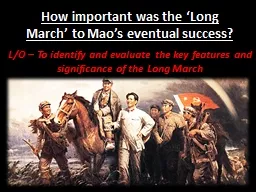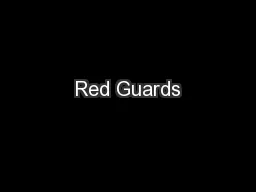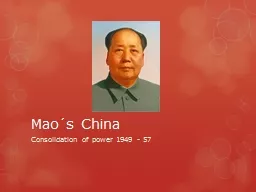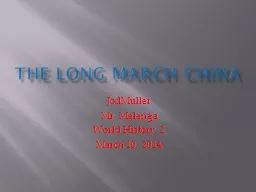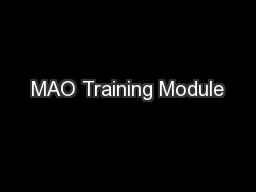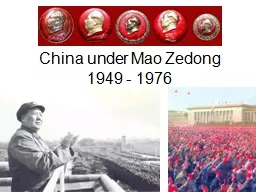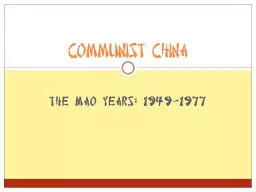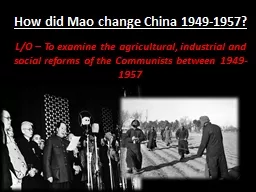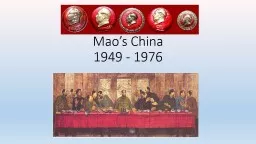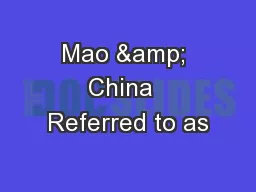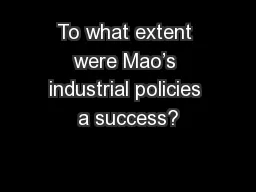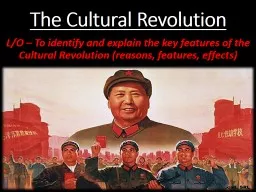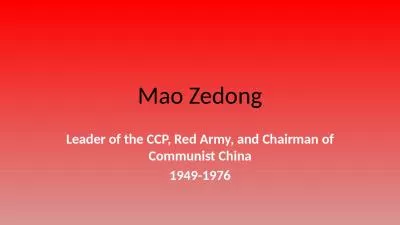PPT-How important was the ‘Long March’ to Mao’s eventual
Author : debby-jeon | Published Date : 2016-05-28
LO To identify and evaluate the key features and significance of the Long March The Northern Expedition 19261928 Chiang finally removed the warlords with the help
Presentation Embed Code
Download Presentation
Download Presentation The PPT/PDF document "How important was the ‘Long March’ t..." is the property of its rightful owner. Permission is granted to download and print the materials on this website for personal, non-commercial use only, and to display it on your personal computer provided you do not modify the materials and that you retain all copyright notices contained in the materials. By downloading content from our website, you accept the terms of this agreement.
How important was the ‘Long March’ to Mao’s eventual: Transcript
Download Rules Of Document
"How important was the ‘Long March’ to Mao’s eventual"The content belongs to its owner. You may download and print it for personal use, without modification, and keep all copyright notices. By downloading, you agree to these terms.
Related Documents

